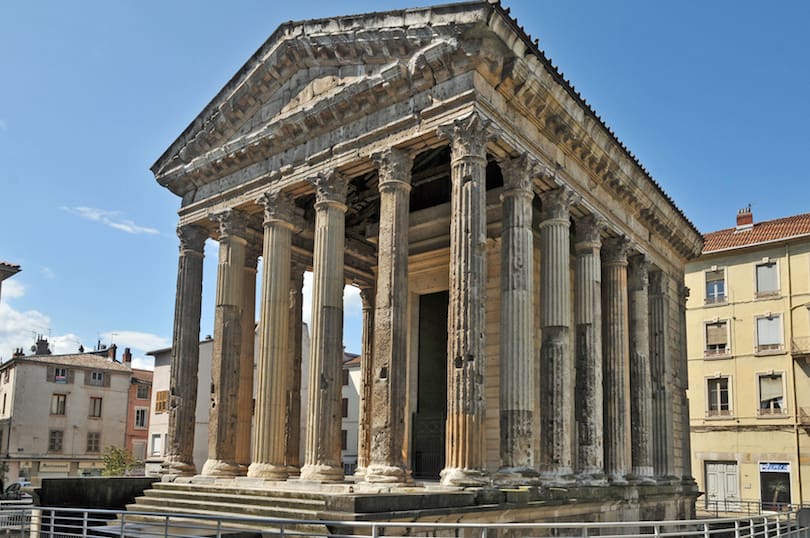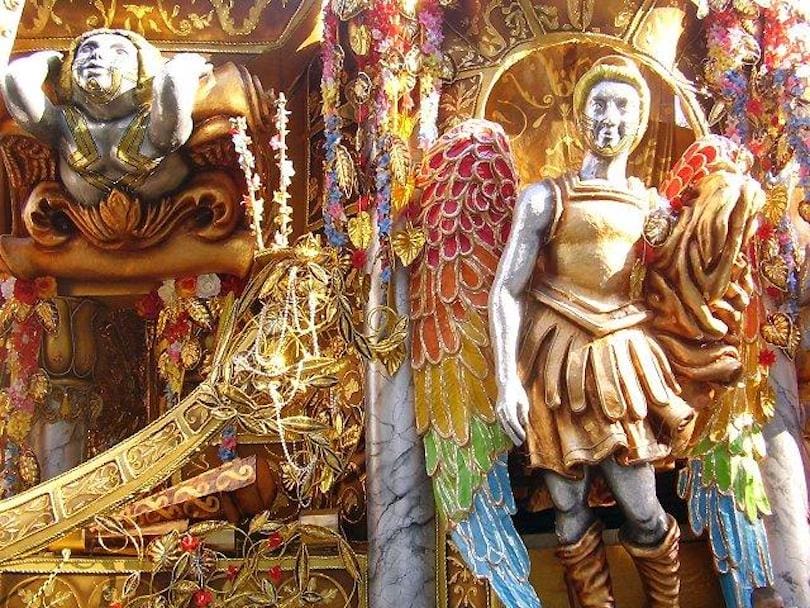Discover the top 10 most spectacular ancient Roman temples that showcase the brilliance of Roman architecture and history. Learn about their captivating features, historical significance, and cultural impact in this informative article.
Introduction
Welcome to a journey back in time to the ancient world of Rome, where architectural marvels stood as a testament to the grandeur and ingenuity of the Roman civilization. The Romans were master builders, and their temples have left an indelible mark on history. In this article, we will explore the 10 most spectacular ancient Roman temples that continue to captivate us with their beauty and historical importance. Let’s delve into the awe-inspiring world of Roman architecture and history!
The Magnificent Temples Unveiled
1. The Pantheon: A Divine Dome
The Pantheon, a true marvel of engineering, is dedicated to all the gods of Rome. Its iconic dome, which remains the world’s largest unreinforced concrete dome, has fascinated architects for centuries. The Oculus, an opening at the dome’s apex, allows a single beam of sunlight to illuminate the interior, creating an otherworldly ambiance. This temple stands as a symbol of Rome’s architectural prowess.
2. The Temple of Jupiter Optimus Maximus: The Mighty Jupiter
The Temple of Jupiter Optimus Maximus, located on Rome’s Capitoline Hill, was dedicated to the supreme god, Jupiter. This grand temple showcased colossal proportions and served as the center of religious life in ancient Rome. The awe-inspiring statues and intricate friezes adorned with mythological scenes make it a sight to behold.
3. The Temple of Venus and Roma: Love and Power
This majestic temple was dedicated to the goddess of love, Venus, and the personification of Rome, Roma. The dual dedication reflects the Romans’ belief in the intimate connection between love and the power of their city. The temple’s architecture mirrored the duality, with twin entrances and symmetrical design elements.
4. The Temple of Saturn: Celebrating Abundance
The Temple of Saturn stood as a symbol of wealth and prosperity, dedicated to the god of agriculture and abundance. It housed the state treasury and hosted various festivals, including Saturnalia, a time of merriment and gift-giving. The temple’s partially preserved columns stand as a reminder of its former glory.
5. The Temple of Vesta: Eternal Flame
The Temple of Vesta honored the goddess of the hearth and home. It featured a circular design with a sacred eternal flame at its center, tended by the Vestal Virgins. The temple’s serene surroundings and sacred rituals made it a spiritual sanctuary for the Romans.
6. The Temple of Castor and Pollux: Twin Guardians
Dedicated to the divine twins Castor and Pollux, this temple symbolized the Roman ideals of brotherhood and loyalty. Its prominent location in the Roman Forum showcased its importance in the city’s civic and religious life. The temple’s iconic columns still stand as a testament to its historical significance.
7. The Temple of Bacchus: A Dionysian Delight
This enchanting temple was dedicated to Bacchus, the god of wine and revelry. Located in Baalbek, Lebanon, the Temple of Bacchus mesmerizes visitors with its well-preserved Corinthian columns and intricate friezes. It stands as a reminder of the Roman Empire’s vast reach and influence.
8. The Maison Carrée: French Elegance
While not located in Rome, the Maison Carrée in Nîmes, France, is an exemplary Roman temple. This remarkably preserved structure was dedicated to Gaius Caesar and Lucius Caesar, the grandsons of Augustus. Its harmonious proportions and stunning façade showcase Roman architectural finesse beyond Italy’s borders.
9. The Temple of Portunus: God of Harbors
The Temple of Portunus, located in Rome, honored the god of harbors and ports. This well-preserved structure exhibits a unique blend of Roman and Greek architectural styles, featuring a rectangular cella and impressive columns. It remains a testament to Rome’s maritime heritage.
10. The Temple of Hadrian: Emperor’s Legacy
The Temple of Hadrian, now incorporated into a later building, was dedicated to the deified Emperor Hadrian. This temple showcased the emperor’s achievements and served as a symbol of imperial power and influence. Though its original form is no longer intact, its historical significance endures.
Frequently Asked Questions (FAQs)
- What makes the Pantheon’s dome special? The Pantheon’s dome is remarkable because it remains the world’s largest unreinforced concrete dome, a testament to the ingenuity of ancient Roman engineering.
- Who was Jupiter, and why was he revered? Jupiter was the supreme god in Roman mythology, associated with thunder and the sky. He was revered for his role as the protector of the state and the embodiment of Roman power.
- Why were temples dedicated to twin gods, like Castor and Pollux? The Romans believed in the significance of brotherhood and loyalty, and dedicating temples to twin gods exemplified these virtues in Roman society.
- What was the purpose of the eternal flame in the Temple of Vesta? The eternal flame in the Temple of Vesta symbolized the hearth of Rome, representing the continuity and vitality of the city.
- How did the Temple of Bacchus showcase the Roman Empire’s influence? The Temple of Bacchus, located in Baalbek, Lebanon, highlights the extent of the Roman Empire’s reach and the integration of local cultures into Roman religious practices.
- Why is the Maison Carrée significant outside of Rome? The Maison Carrée exemplifies Roman architecture and aesthetics beyond Rome, showcasing the influence of Roman culture on distant regions.
Conclusion
As we conclude our virtual journey through the 10 most spectacular ancient Roman temples, we are left in awe of the genius and artistry of the Roman architects. These temples stand as testaments to the rich cultural heritage and the significant impact of the Roman civilization on the world. From the grandeur of the Pantheon to the harmony of the Maison Carrée, each temple leaves an indelible impression on our understanding of ancient history and architectural brilliance.
So, the next time you find yourself in Rome or near any of these magnificent structures, take a moment to immerse yourself in the history and marvel at the legacy left behind by one of the greatest civilizations in human history.














I have been reading out some of your stories and it’s pretty clever stuff. I will make sure to bookmark your site.
amei este site. Para saber mais detalhes acesse o site e descubra mais. Todas as informações contidas são informações relevantes e diferentes. Tudo que você precisa saber está está lá.
Really enjoyed this article, can you make it so I get an update sent in an email whenever there is a fresh article?
amoxil order online – https://combamoxi.com/ buy amoxil generic